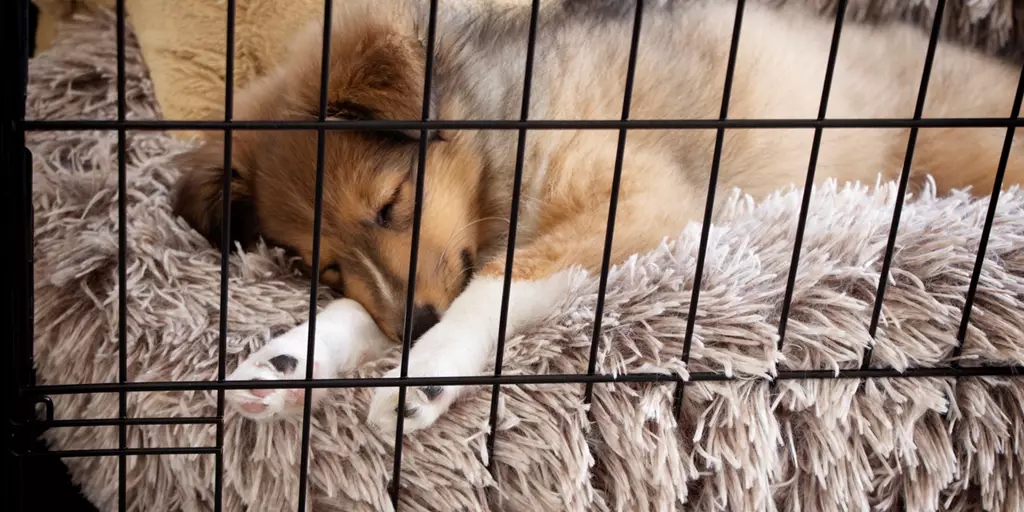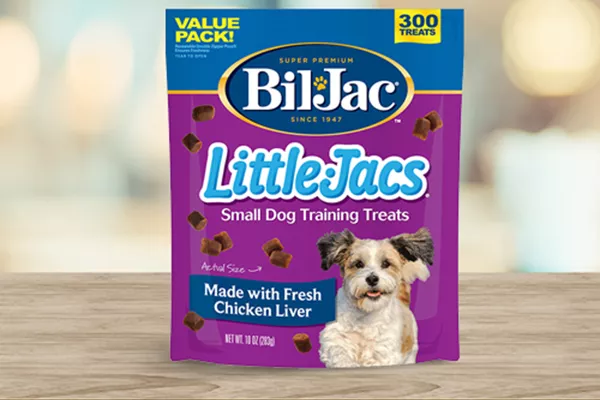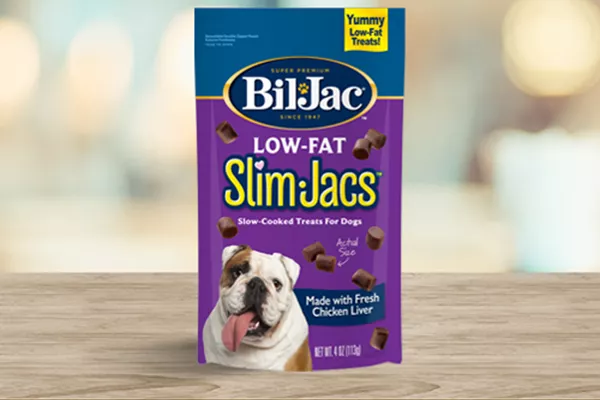Training is an important responsibility for pet parents. Between teaching a dog some new tricks or helping your best friend develop some good behaviors, training plays an important role in raising a well-behaved pup.
Crate training is another valuable teaching tool for your best friend. Whether you just brought a new puppy home or need to give an adult dog a space of their own, crate training can be a good option for families looking for some peace of mind. Let’s break down why crate training is useful and how you can crate train your canine companion.
Why Crate Training Works for Puppies and Dogs
While some people have reservations about crate training dogs and puppies, our furry friends have a history with finding comfort in small spaces. According to Professional Animal Trainer Joel Silverman, dogs are considered den animals. Dogs throughout history have felt a natural instinct to create a space where they can go when they’re tired or stressed.
Crates are not the same as a den, but they are enclosed space where dogs and puppies can call their own. This natural affinity allows pet parents to condition dogs to use their crate in several ways:
- It gives your dog a place to sleep at night (or nap during the day)
- It allows you to leave your dog home alone
- It helps prevent bad behaviors
- It serves as a place your dog can go if they feel scared or stressed
- It helps you house train your dog
Of course, it’s hard to benefit from crates until you’ve trained your best friend to use and grow comfortable with them. Fortunately, we have the steps you need to take when crate training puppies and adult dogs.
A Step-by-Step Guide to Crate Training
Whether you have an adult dog or a young puppy, crate training can take time. The whole process can span from a few days for an eager pup or a few weeks for an older dog who isn’t quite as ready to learn new tricks.
The good news is that while there isn’t an exact schedule for crate training, there are some steps that you can take to teach your best friend how to use a crate. In fact, Joel Silverman even has a short video explaining some key aspects of crate training. Watch the video below and then read through the rest of the post for a step-by-step process and some other crate training tips.
Step 1: Introduce your dog or puppy to the crate
To help your dog become familiar with the new crate, start the training slowly. It’s important to take small steps at first so that your best friend can grow comfortable with crates. For the first step, all you should do is introduce your dog to their new crate.
Put the crate in a room where people normally hang out so that your dog will be able to see the crate for themselves. You’ll want to spend the first day of training by simply letting your dog walk in and out of the crate freely. This process will let their natural curiosity take over to investigate this new space.
If your furry friend isn’t as adventurous, you can put a dog treat into the crate for some extra motivation. You can also bring your dog over to the crate with some encouraging words – just don’t force them to enter against their will. When your best friend walks in and out of the crate, congratulate and reward them with another treat.
Step 2: Try closing them in a crate
After a day or two of success, you can start experimenting with closing the door on the crate. Repeat the same exercise in step one, except you can gently shut the door after your pooch walks into the crate.
Keep the door shut for about 15 to 20 seconds and give them a treat before your dog or pup walks back out. Your furry friend may whine in the crate at first, but keep them in there for a short period of time so that they can get used to the process. Once they’re done, speak to them in a kind, positive tone and reward them with a treat so that they associate being in the crate with positive feelings.
Step 3: Extend the crate times
Pretty soon, you can start keeping your pup inside the crate for minutes at a time. Make sure you are dropping a treat inside the crate while they’re inside. Over time, minutes can turn into hours until your best friend is completely comfortable in the crate.
Once your dog is starting to adjust to longer crate times, it’s also important to take them outside after an extended period in the crate. You’ll want to develop the habit of having your best friend go to the bathroom after being in the crate, especially for puppies who are still potty training. This practice will help train your dog to wait until they’re outside to use the restroom after staying in the crate while you’re gone or overnight.
Step 4: Try crating them while you’re gone or asleep
Once your dog is used to staying in the crate for a solid 30 minutes or more, it’s time the take the big step into leaving them in there overnight or while you’re away from home. This process should start the same as any other stay – direct them into the crate, give them a treat, and close the door.
It’s important to not make this process a big event, especially if you’re leaving the house. If you get overly sad or excited, so will your dog. Stay calm as you get ready to leave so that your dog doesn’t pick up on those anxious behaviors.
As for heading to bed, you’ll need to experiment with where you keep the crate at night. It can be good to start with the crate in or near your bedroom. This will help older dogs feel less isolated and help you keep closer tabs on puppies who may need to go to the bathroom more often. If you don’t want your dog’s crate in or near your room, you can gradually move it farther away as your dog adjusts to sleeping in the crate.
Three Key Dog and Puppy Crate Training Tips
While the steps above can help your dog get used to crates, there are a few best practices to keep in mind when crate training. These key tips can make crate training an even easier process for both pawrent and best friend.
Choose the right type of dog crate
Before you can start training your dog, you need to provide a proper space for them. It’s important to choose the right type of dog crate for your furry friend. For example, does your dog need a smaller, more enclosed plastic crate, or a larger wire crate? To decide which crate is right, you should consider the following factors:
- How much space does my dog need? You’ll want enough space for your dog to stand up and turn around. If the crate is too big, the dog may be tempted to use a corner as a bathroom.
- What is your dog’s personality? Hard-walled plastic crates can be good for dogs who like to chew or enjoy seclusion, whereas wire crates are more amenable to dogs that prefer some more space or visibility.
- How long will your dog be in that crate? If you plan to be away for a while, make sure your dog’s crate is big enough to let the stretch their legs and move around.
Personalize the crate to your best friend
Treats aren’t the only things that you should put in a crate. There are a variety of items that can make a crate more comfortable, including a dog bed, some blankets, or something else with padding. Comfort items like a favorite toy in the crate or something that smells like you can keep your best friend happy and occupied while you’re away. If you’re going to be gone for a while, leave behind some water and anything else your dog may need while you’re away.
Be positive and don’t use crates as punishment
Any kind of dog training should start with building a trusting relationship between you and your dog. Keep your approach and tone positive! Your furry friend will acclimate to training much quicker if you are positive, patient, and reassuring.
It’s also crucial not to make using a crate an unpleasant experience. Using a crate as punishment will create a negative association with that space. Those bad feelings will affect any other occasion where your dog goes in the crate.
Learn More Dog Training Tips
Were these tips helpful? See our training page for more tips and join the Best Friends Club for exclusive discounts, interesting articles, and more for you and your dog.




